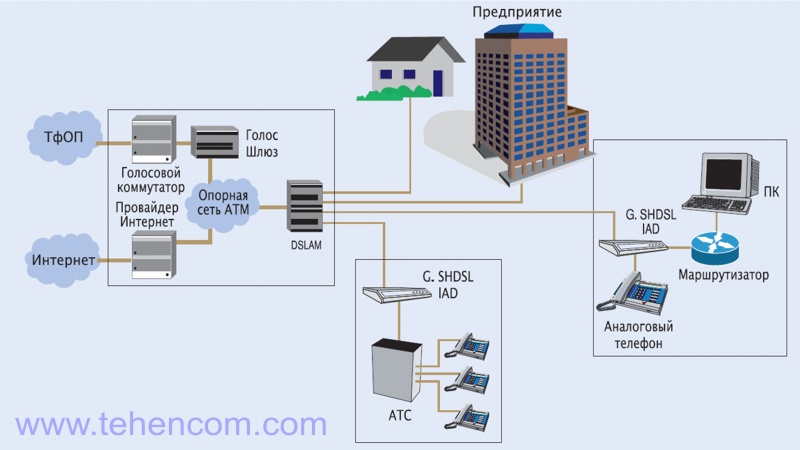Testing xDSL networks and equipment (ADSL2, ADSL2+, VDSL2, etc.)

|
хDSL - this is a family of technologies that can significantly expand the capacity of the subscriber line of the local telephone network by using efficient linear codes and adaptive methods for correcting line distortions based on modern achievements in microelectronics and digital signal processing methods. |
A Quick Reference Guide to Testing Subscriber Lines and DSL Services (92 pages; 4.4 MB)
In abbreviation xDSL the character "x" is used to indicate the first character in the name of a particular technology, and DSL stands for digital subscriber line DSL (English)D ital S ubscriber L ine is a digital subscriber line). xDSL technologies allow you to transfer data at speeds that are significantly higher than those available even to the best analog and digital modems. These technologies support voice, high-speed data and video transmissions, creating significant benefits for both subscribers and providers. Many xDSL technologies allow you to combine high-speed data and voice over the same copper pair. Existing types of xDSL technologies differ mainly in the form of modulation used and the data rate.
to the main types xDSL relate: ADSL, ADSL2, ADSL2+, VDSL, VDSL2, HDSL, IDSL, MSDSL, PDSL, RADSL, SDSL, SHDSL, UADSL. All these technologies provide high-speed digital access over a subscriber's telephone line. Existing xDSL technologies are designed to achieve specific goals and meet specific market needs. Some xDSL technologies are original designs, others are merely theoretical models, while still others are ADSL, ADSL2, ADSL2+, VDSL, VDSL2 have become widely used standards. The main difference between these technologies is the modulation methods used to encode the data.
It is clear that in the future high capacity systems such as fiber optic cables will be brought to every business and residential property. For now DSL provides a cost-effective way to obtain the required bandwidth to deliver services such as video-on-demand (VoD), Internet protocol television (IPTV), Internet access, voice-over-Internet protocol (VoIP), and virtual private networks (VPNs).

Devices recommended for xDSL testing (ADSL, ADSL2, ADSL2+, VDSL, VDSL2, etc.)
For stable operation of xDSL, it is necessary to perform the following measurements of the twisted pair parameters:
- frequency response of the line;
- insertion loss for a certain frequency;
- noise and crosstalk;
- impulse interference;
- line asymmetry;
- detection of Pupin coils;
- detection of parallel taps;
- detection of split pairs;
- spectrum control;
- detection of defects with high resistance values;
- detection of defective connections;
- detection of resistive defects.
Recommended EXFO AXS-200/625 - tester for copper lines up to 30 MHz (ADSL1/2/2+ and VDSL2)
| Model | A photo | Short description |
| Manual modular platform for access networks AXS-200 of the company EXFO | ||
| EXFO AXS-200 SharpTESTER from stock |

Product code: 1000393 |
Multiservice manual platform. Measurements in three environments (DSL, Ethernet, and fiber), can be easily configured for measurements in copper / DSL / triple-play, as well as Ethernet and optical fiber. |
| EXFO AXS-200/625 from stock |

Product code: 1000391 |
Tester for copper lines up to 30 MHz (ADSL1/2/2+ and VDSL2) and testing Triple-Play and Ethernet - EXFO AXS-200/625. Spectrum analysis up to 30 MHz. Checking traditional PM lines. Checking various quality parameters of IPTV and VoIP services. |